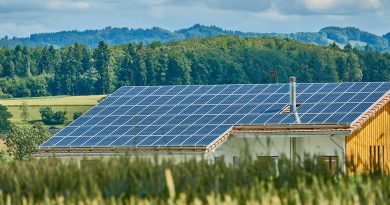How to calculate the surface area required by solar panels
Installing solar panels is a significant investment, and accurately calculating the surface area required for installation is crucial for optimizing energy production and maximizing savings. This guide will walk you through the factors influencing solar panel sizing, including energy consumption, panel wattage, roof orientation, and shading. By the end of this guide, you’ll be able to estimate the necessary surface area for your solar panels and make informed decisions about your solar energy system.
Table of Contents
- 1 Understanding Energy Consumption Patterns
- 2 Calculating Solar Panel Wattage Based on Energy Needs
- 3 Assessing Roof Suitability and Available Space
- 4 Considering Factors Like Shading and Orientation
- 5 Balancing System Size with Budget and Incentives
- 6 Using Online Solar Calculators and Design Tools
- 7 Optimizing Solar Panel Placement for Maximum Efficiency
- 8 The Role of Battery Storage in Solar System Sizing
- 9 Government Incentives and Rebates for Solar Panel Systems
- 10 Potential Challenges and Solutions in Solar Panel Sizing
- 11 The Impact of Net Metering on System Design
- 12 Long-Term Energy Consumption Projections and System Adaptability
- 13 Table: Example Solar Panel Sizing for a 7.4 kW System
- 14 FAQ Section
- 15 Conclusion
Understanding Energy Consumption Patterns
Step 1: Determine Your Average Energy Consumption
- Review Your Energy Bills: Look at your electricity bills from the past year to determine your average monthly and annual energy consumption in kilowatt-hours (kWh).
- Consider Future Needs: If you plan to increase your energy usage (e.g., adding an electric vehicle), factor this into your calculations.
Example Calculation:
- Annual Energy Consumption: If your average monthly consumption is 900 kWh, your annual consumption is 900 kWh x 12 = 10,800 kWh.
Calculating Solar Panel Wattage Based on Energy Needs
Step 2: Estimate the Solar Panel System Size
- Determine the Required System Size: Divide your annual energy consumption by the average solar irradiance (peak sun hours) in your location to find the required system size in kilowatts (kW).
Example Calculation:
- Location: Assume an average of 4 peak sun hours per day.
- Required System Size: 10,800 kWh / (4 hours/day x 365 days/year) = 7.4 kW system.
Step 3: Calculate the Number of Panels
- Choose Panel Wattage: Solar panels typically range from 250W to 400W.
- Determine Number of Panels: Divide the system size by the wattage of the chosen panels.
Example Calculation:
- Panel Wattage: 350W per panel.
- Number of Panels: 7,400W / 350W per panel ≈ 21 panels.
Assessing Roof Suitability and Available Space
Step 4: Measure Available Roof Space
- Roof Dimensions: Measure the length and width of the roof sections where you plan to install solar panels.
- Usable Roof Area: Consider only the usable area that is free from obstructions like chimneys, vents, or skylights.
Step 5: Calculate Required Surface Area
- Panel Dimensions: Standard solar panels are typically around 1.7 meters by 1 meter (1.7m²).
- Total Surface Area: Multiply the number of panels by the area of one panel.
Example Calculation:
- Panel Area: 1.7m² per panel.
- Total Surface Area: 21 panels x 1.7m² = 35.7m² required.
Considering Factors Like Shading and Orientation
Step 6: Account for Shading
- Shading Analysis: Use tools like solar pathfinders to identify potential shading issues throughout the year.
- Adjust for Shading: If parts of the roof are shaded, consider installing fewer panels or using microinverters to minimize the impact on system performance.
Step 7: Optimize Roof Orientation
- Optimal Orientation: In the Northern Hemisphere, south-facing roofs are ideal. East- and west-facing roofs are also viable but may require more panels to achieve the same output.
- Tilt Angle: Adjust the tilt angle to maximize sun exposure based on your location’s latitude.
Balancing System Size with Budget and Incentives
Step 8: Consider Budget and Incentives
- Cost Considerations: Larger systems require more upfront investment, but they can also generate more savings over time.
- Government Incentives: Investigate available subsidies, tax credits, and rebates that can offset the cost of your solar system.
Example:
- Budget: If budget constraints limit your system size, prioritize maximizing efficiency within the available space.
- Incentives: If government incentives are available, they can help expand your budget, allowing for a larger system.
Using Online Solar Calculators and Design Tools
Step 9: Utilize Solar Calculators
- Online Tools: Use tools like PVWatts Calculator, Solar-Estimate, or company-specific calculators to refine your system size and surface area estimates.
- Customization: These tools allow you to input specific details like location, roof orientation, and shading to get more accurate estimates.
Optimizing Solar Panel Placement for Maximum Efficiency
Step 10: Optimize Panel Placement
- Avoid Obstructions: Place panels in areas with the least shading and best sun exposure.
- Group Panels Effectively: Keep panels grouped together to minimize wiring costs and losses.
Example:
- Ideal Placement: Group panels on the south-facing roof section, away from any potential shading sources like trees or neighboring buildings.
The Role of Battery Storage in Solar System Sizing
Step 11: Consider Adding Battery Storage
- Energy Independence: Batteries allow you to store excess energy generated during the day for use at night, reducing reliance on the grid.
- System Sizing Impact: Adding battery storage may reduce the number of panels needed to meet your energy needs, as stored energy can cover shortfalls during low production periods.
Government Incentives and Rebates for Solar Panel Systems
Step 12: Research Government Incentives
- Incentives and Rebates: Government programs can significantly reduce the cost of solar panel installation.
- Net Metering: Some regions offer net metering, allowing you to sell excess energy back to the grid, which can affect your system sizing calculations.
Potential Challenges and Solutions in Solar Panel Sizing
Step 13: Address Challenges
- Limited Roof Space: If roof space is limited, consider high-efficiency panels that produce more power per square meter.
- Complex Roofs: For complex roof designs, consider ground-mounted systems or multiple small arrays on different roof sections.
The Impact of Net Metering on System Design
Step 14: Incorporate Net Metering
- System Size Adjustments: If net metering is available, you might size your system slightly larger to maximize the financial benefits of selling excess energy back to the grid.
Long-Term Energy Consumption Projections and System Adaptability
Step 15: Plan for Future Energy Needs
- Future-Proofing: Consider potential increases in energy consumption, such as purchasing electric vehicles or adding air conditioning, when sizing your system.
- Expandability: Ensure that your system can be easily expanded in the future to accommodate increased energy needs.
Table: Example Solar Panel Sizing for a 7.4 kW System
| Factor | Value |
|---|---|
| Annual Energy Consumption | 10,800 kWh |
| Average Peak Sun Hours/Day | 4 hours |
| Required System Size | 7.4 kW |
| Panel Wattage | 350W |
| Number of Panels Required | 21 panels |
| Panel Dimensions | 1.7m² per panel |
| Total Surface Area Required | 35.7m² |
| Optimal Roof Orientation | South-facing |
| Estimated Cost | ₹4,00,000 – ₹5,00,000 (without incentives) |
FAQ Section
- How do I calculate the number of solar panels I need?
- To calculate the number of panels, divide your required system size (in kW) by the wattage of the panels you choose. For example, if you need a 7.4 kW system and each panel is 350W, you would need approximately 21 panels.
- What factors affect the surface area required for solar panels?
- The required surface area depends on the number of panels, their wattage, and physical dimensions. Roof orientation, shading, and available space also play significant roles.
- How do I assess my roof’s suitability for solar panels?
- Measure the usable roof area, consider its orientation (south-facing is ideal), and check for any shading from trees or structures. Tools like solar pathfinders can help evaluate shading throughout the year.
- Can I still install solar panels if my roof doesn’t face south?
- Yes, panels can be installed on east- or west-facing roofs, though they may produce less energy. Alternatively, consider ground-mounted systems or other orientations with the help of microinverters.
- What are the benefits of adding battery storage to my solar system?
- Battery storage allows you to store excess energy for use during nighttime or cloudy days, reducing your reliance on the grid and enhancing energy independence.
Conclusion
Accurately calculating the surface area required for solar panel installation is essential for optimizing energy production and maximizing your investment. By considering factors like energy consumption, panel wattage, roof suitability, and shading, you can determine the ideal system size and layout for your solar panels. Using tools like online solar calculators and consulting with professional installers can further refine your estimates, ensuring that your solar panel system meets your energy needs while fitting within your budget and available space.



